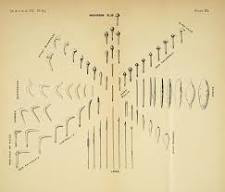So I'm hoping people will understand what I mean if I use the term ' Tech Tree' - but if not a Tech Tree is a sort of linear & spurred progression of innovations or tools that then allowed a jump or progression to a next level of innovation and so on and so forth.
At certain points multiple innovated jumps would occur together.
With all that being said I wonder if there is a primitive tech tree of I guess historic artefacts or skills?
Example for ease of understanding
If I craft a primitive stone knife I can then craft elements to make a fire plough, with a fire plough I can make a fire hardened digging stick , with a digging stick I can dig and gather clay , with clay and fire I can create pottery etc etc
I'm just wondering if from historic evidence if there was a common path of tech tree jumps from one thing to another?
Where does a Bow sit? before or after pottery etc
Hoping that makes some kind of sense.
At certain points multiple innovated jumps would occur together.
With all that being said I wonder if there is a primitive tech tree of I guess historic artefacts or skills?
Example for ease of understanding
If I craft a primitive stone knife I can then craft elements to make a fire plough, with a fire plough I can make a fire hardened digging stick , with a digging stick I can dig and gather clay , with clay and fire I can create pottery etc etc
I'm just wondering if from historic evidence if there was a common path of tech tree jumps from one thing to another?
Where does a Bow sit? before or after pottery etc
Hoping that makes some kind of sense.




